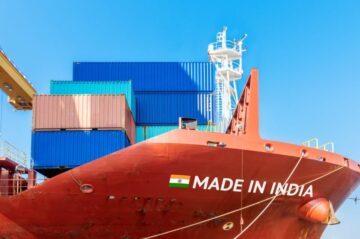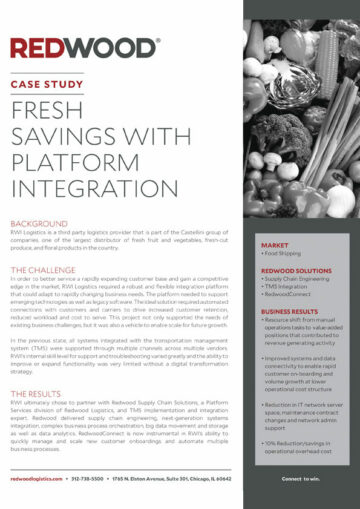
For global supply chains striving to meet growing expectations of sustainability, transparency and traceability are essential capabilities.
Those qualities can be tricky to achieve in a complex supply chain network. The first challenge is ensuring smooth data flow across disparate systems across multiple organizations, and paying attention to data privacy norms and conflicts of interest, such as supply chain partners working with more than one company. The second challenge is ensuring that the data is secure, accurate and captured in a way that supports reporting and sustainability.
Following is a step-by-step approach to overcoming these challenges, with a particular focus on sourcing.
Data consolidation. The process starts with gathering certifications and ingredient data for materials, using a Global Trade Identification Number (GTIN) to standardize product traceability across organizational boundaries. Harmonizing all collected data ensures consistency and clarity, while checks and balances ensure compliance with local and international laws. In addition, cross-functional and cross-entity data integration creates a unified source of truth, laying a solid foundation for transparency and traceability throughout the supply chain.
Traceability modeling. The next step involves structuring the data to efficiently monitor and examine a product or material’s entire lifecycle, from raw-materials acquisition to final consumer delivery.
For instance, farmers may report their corn’s organic status or their farming certifications. This information needs to be translated into a standard format to calculate key performance indicators such as the percentage of sustainably sourced agrarian materials. While seemingly simple at first, the complexities escalate for large companies procuring hundreds of materials worldwide, all needing to comply with numerous regional and global certifications. Thus, traceability modeling becomes a nuanced but critical step, requiring precision, efficiency and comprehensiveness to establish data-driven supply chain sustainability.
Supply chain reporting. Once data is centralized and formatted to support KPI measurability, reports can be generated to track suppliers’ performance from the first tier to the nth tier. These reports can create transparency for internal teams, external partners and auditors. Automated disclosures of a regular frequency can flag risks, such as deviations of the KPIs from acceptable norms, so they can be mitigated quickly.
To achieve supply chain transparency and traceability, companies need the ability to unify diverse data, model it for traceability, and prepare it for diverse reporting scenarios. A central hub is recommended to monitor and improve sustainability practices of the supply chain network. This hub can aggregate and harmonize data across internal and external sources, ensuring data completeness for modeling, dashboards and reports. It can also automate essential data-sharing across ecosystems with advanced features, ensuring speed and precision. Additionally, standardized processes are critical for regulatory compliance.
Enterprises often use a central hub to improve visibility and resolve data management complexities across multiple plants and production processes. This hub provides data streams for artificial intelligence and machine learning models, making possible “single-pane-of-glass” views of inventory and manufacturing processes.
For example, a company might uncover transparency gaps in the sustainability of a specific supply chain segment, such as the environmental practices of palm oil suppliers in a certain geography. Here, a central hub can collect the required data from palm oil suppliers. This data and related insights will quickly be available on the company’s systems and dashboards. Then, internal teams can use the information to learn if the suppliers’ practices meet the relevant sustainability criteria. When a supplier isn’t compliant, internal experts or external consultants can pinpoint the areas for improvement and help the partner move in the right direction.
With this technological adoption, the traceability data for palm oil, including the relevant metrics and insights, will be updated regularly and shared across teams and external suppliers. From there, the data ecosystem can cover the entire supply chain network.
Depending on the company’s focus, solutions can be tailored to address different aspects of supply chain transparency and traceability. They can be used for procurement to ensure sustainable sourcing, logistics optimization or even tracking of products down the supply chain to prevent pollution. Of course, all these can be combined to deliver an end-to-end visibility platform that aligns with global reporting standards, and sets a supply chain network on course for lasting sustainability.
Kelsey Polansky is supply chain manager and sustainability champion with Tredence Inc.
- SEO Powered Content & PR Distribution. Get Amplified Today.
- PlatoData.Network Vertical Generative Ai. Empower Yourself. Access Here.
- PlatoAiStream. Web3 Intelligence. Knowledge Amplified. Access Here.
- PlatoESG. Carbon, CleanTech, Energy, Environment, Solar, Waste Management. Access Here.
- PlatoHealth. Biotech and Clinical Trials Intelligence. Access Here.
- Source: https://www.supplychainbrain.com/blogs/1-think-tank/post/39189-how-to-overcome-challenges-to-creating-sustainable-supply-chains
- :is
- a
- ability
- acceptable
- accurate
- Achieve
- acquisition
- across
- addition
- Additionally
- address
- Adoption
- advanced
- aggregate
- Aligns
- All
- also
- an
- and
- approach
- ARE
- areas
- artificial
- artificial intelligence
- AS
- aspects
- At
- attention
- auditors
- automate
- Automated
- available
- balances
- BE
- becomes
- boundaries
- but
- CAN
- capabilities
- captured
- central
- centralized
- certain
- certifications
- chain
- chains
- challenge
- challenges
- champion
- Checks
- clarity
- collect
- collected
- combined
- Companies
- company
- Company’s
- complex
- complexities
- compliance
- compliant
- comply
- conflicts
- Conflicts of Interest
- consistency
- consolidation
- consultants
- consumer
- course
- cover
- creates
- Creating
- criteria
- critical
- dashboards
- data
- data integration
- data management
- data privacy
- data-driven
- deliver
- delivery
- different
- direction
- Disclosures
- disparate
- diverse
- down
- ecosystem
- Ecosystems
- efficiency
- efficiently
- end-to-end
- ensure
- ensures
- ensuring
- Entire
- environmental
- escalate
- essential
- establish
- Even
- examine
- example
- expectations
- experts
- external
- farmers
- farming
- Features
- final
- First
- flow
- Focus
- For
- format
- Foundation
- Frequency
- from
- gaps
- gathering
- geography
- Global
- global trade
- Growing
- harmonize
- help
- here
- How
- How To
- HTTPS
- Hub
- Hundreds
- Identification
- if
- improve
- improvement
- in
- Including
- Indicators
- information
- ingredient
- insights
- instance
- integration
- Intelligence
- interest
- internal
- International
- into
- inventory
- involves
- IT
- jpg
- Key
- large
- lasting
- Laws
- laying
- LEARN
- lifecycle
- local
- logistics
- machine
- Making
- management
- manager
- manufacturing
- material
- materials
- May..
- Meet
- Metrics
- might
- mitigated
- model
- modeling
- models
- Monitor
- more
- move
- multiple
- needing
- needs
- network
- next
- norms
- nuanced
- number
- numerous
- of
- often
- Oil
- on
- ONE
- optimization
- or
- organic
- organizational
- organizations
- Overcome
- overcoming
- palm
- particular
- partner
- partners
- paying
- percentage
- performance
- plants
- platform
- plato
- Plato Data Intelligence
- PlatoData
- Pollution
- possible
- practices
- Precision
- Prepare
- prevent
- privacy
- process
- processes
- procurement
- Product
- Production
- Products
- provides
- qualities
- quickly
- recommended
- regional
- regular
- regularly
- regulatory
- Regulatory Compliance
- related
- relevant
- report
- Reporting
- Reports
- required
- resolve
- right
- risks
- s
- scenarios
- Second
- secure
- seemingly
- segment
- Sets
- shared
- Simple
- smooth
- So
- solid
- Solutions
- Source
- sourced
- Sources
- Sourcing
- specific
- speed
- standard
- standardized
- standards
- starts
- Status
- Step
- streams
- striving
- such
- supplier
- suppliers
- supply
- supply chain
- supply chain transparency
- Supply chains
- support
- Supports
- Sustainability
- sustainable
- sustainably
- Systems
- tailored
- teams
- technological
- than
- that
- The
- the information
- their
- then
- There.
- These
- they
- this
- throughout
- Thus
- tier
- to
- Traceability
- track
- trade
- translated
- Transparency
- tricky
- truth
- uncover
- unified
- updated
- use
- used
- using
- views
- visibility
- Way..
- when
- while
- will
- with
- working
- worldwide
- zephyrnet












